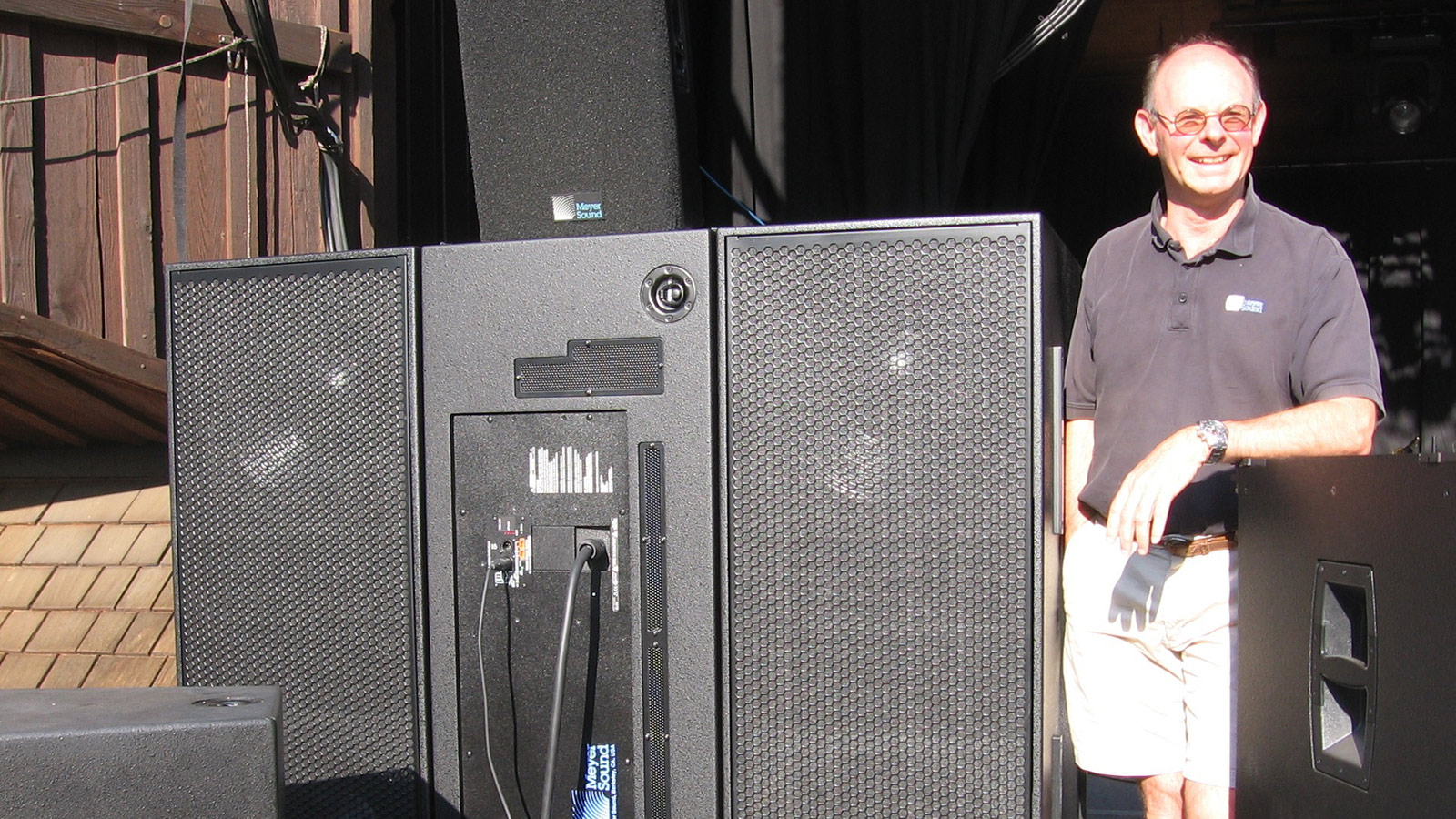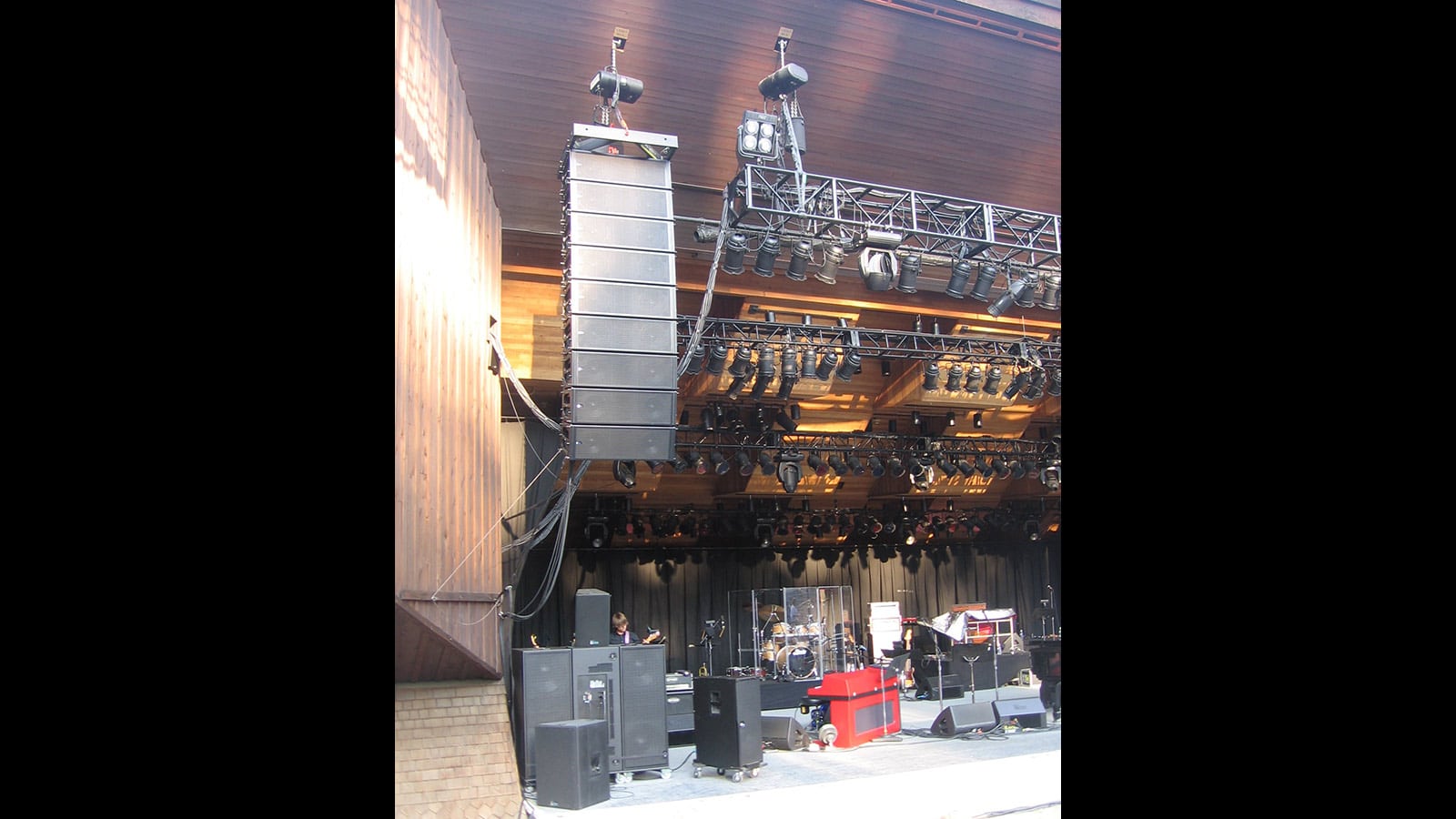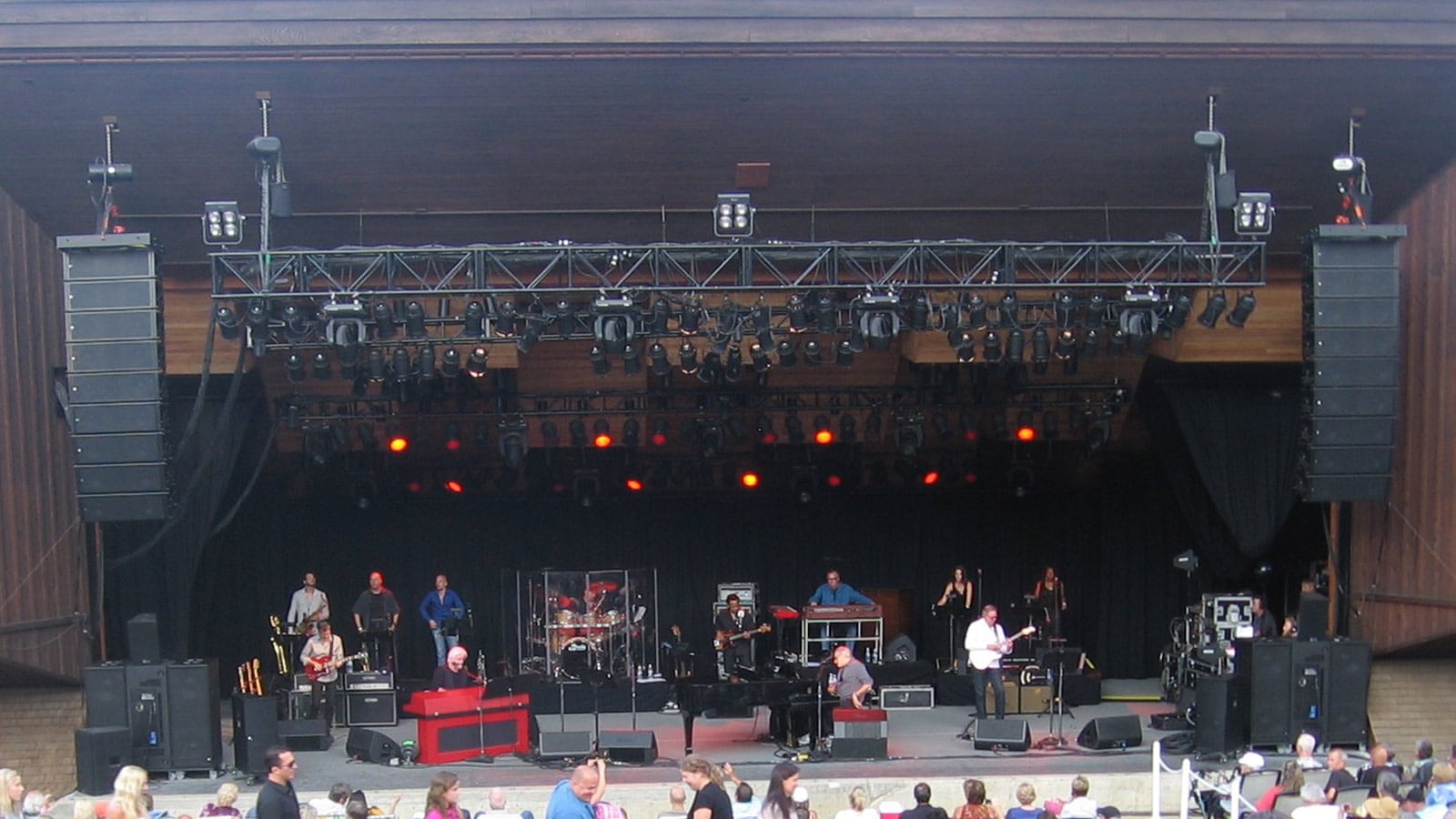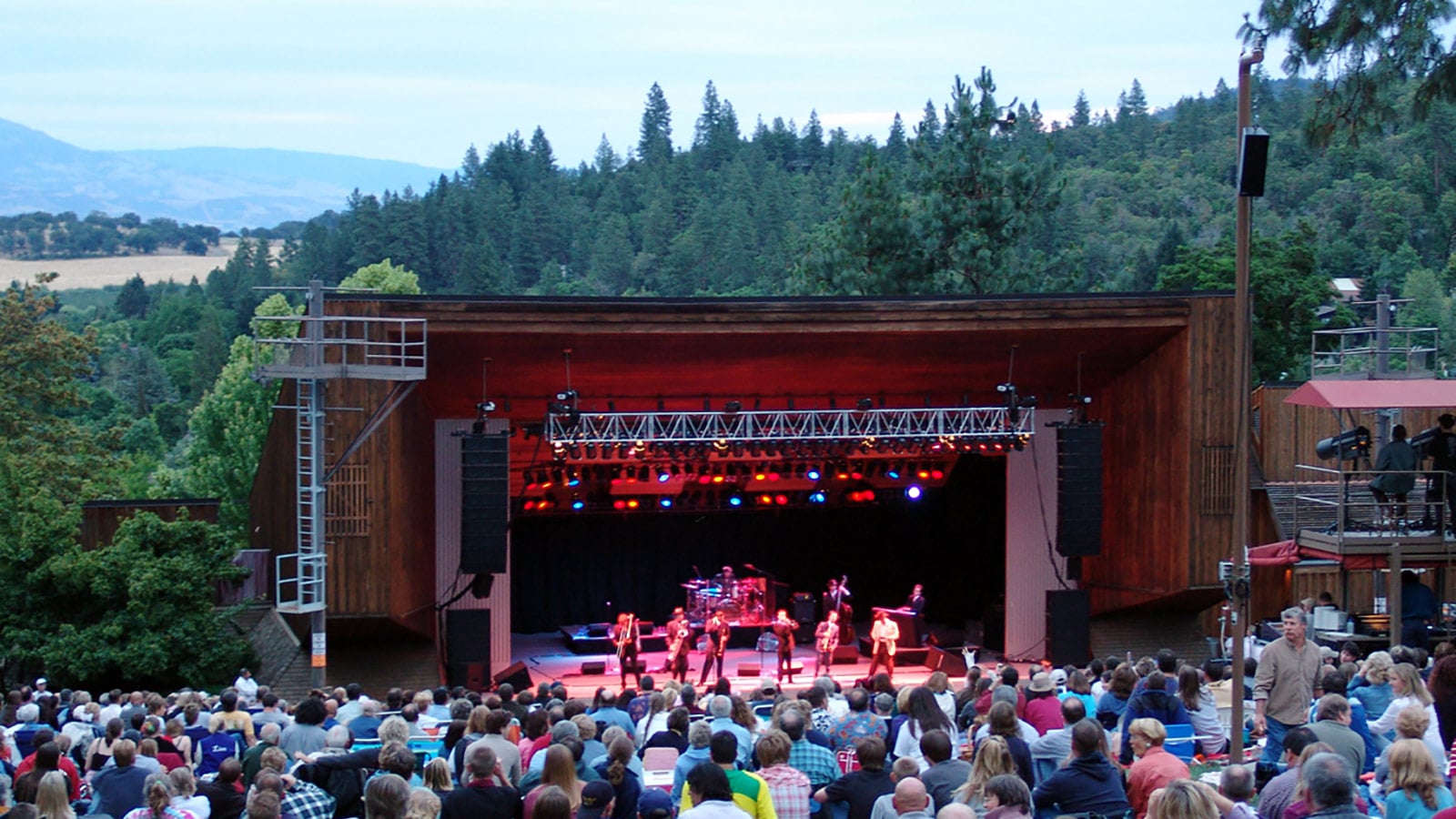At sound check, when we first turned [the 1100-LFC loudspeakers] on, I looked at my systems tech and said, 'Wow, these are really tight, right out of the box.'”
Joseph WalshEngineer, Dukes of September
Featured Products
1100-LFC, CQ-1, JM-1P, MICA, UPM‑1PThe crowds got up and danced when George Relles Sound fired up six Meyer Sound 1100-LFC low-frequency control elements—among the first to be shipped—at Britt Festivals in Jacksonville, Ore. The formidable linear bass reinforcement systems, working underneath MICA line arrays, made their debut in early July concerts by Ben Harper and the Dukes of September Rhythm Revue (Donald Fagan, Michael McDonald, and Boz Scaggs).
“The main reason I bought the 1100-LFCs was to get more power with a smaller truck pack,” admits George Relles, owner of the Eugene, Ore.–based rental and installation company. “But I was pleasantly surprised at how good they sound. It’s a quality hard to put into words, but they have a bigger feel, with more warmth and purity.”
Used in place of traditional subwoofers, the 1100-LFC low-frequency control element is a self-powered loudspeaker defined by its sonic linearity in reproducing low-frequency transients at high, continuous levels with very low distortion over an operating range of 28 Hz to 100 Hz.
For the Britt Festivals, 1100-LFC loudspeakers are arranged three per side in a cardioid configuration on the stage. “There’s nowhere else to put the subs,” says Relles, “and that’s often a problem because they’re usually sitting right in front of monitor world. Fortunately, with the 1100-LFC’s linear response, the rear cancellation is astonishing. There’s solid bass 300 feet up the hill, but from behind you can’t really tell if they’re turned on.”
The low-frequency improvements have stimulated crowd enthusiasm and earned positive comments from the first FOH engineers to mix with them.
“I really liked them,” says Joseph Walsh, who was behind the Avid Profile for a non-stop 2.5-hour soulful set by the Dukes of September. “At sound check, when we first turned them on, I looked at my systems tech and said, ‘Wow, these are really tight, right out of the box.'”
The balance of the Meyer Sound system comprises nine MICA line array loudspeakers per side, two each JM-1P and UPA-1P loudspeakers for front fill, a CQ-1 loudspeaker for corner fill, and two UPM‑1P loudspeakers for delay. The same basic system will be in place through the rest of the season, with upcoming performances scheduled by—among others—Ziggy Marley, Michael Franti, the Avett Brothers, Diana Krall, Slightly Stoopid, and Huey Lewis and the News.
George Relles Sound has been the principal audio reinforcement provider for the Britt Festivals since 1980, and has employed Meyer Sound systems exclusively since 1986.
“The Britt” (as it is known locally) is the oldest summer performing arts festival in the Pacific Northwest, beginning as a classical-only festival in 1963. The Britt Festival Orchestra remains in residence each August, with an eclectic variety of pop, rock, country, and world music acts taking the stage in June, July, and September.




